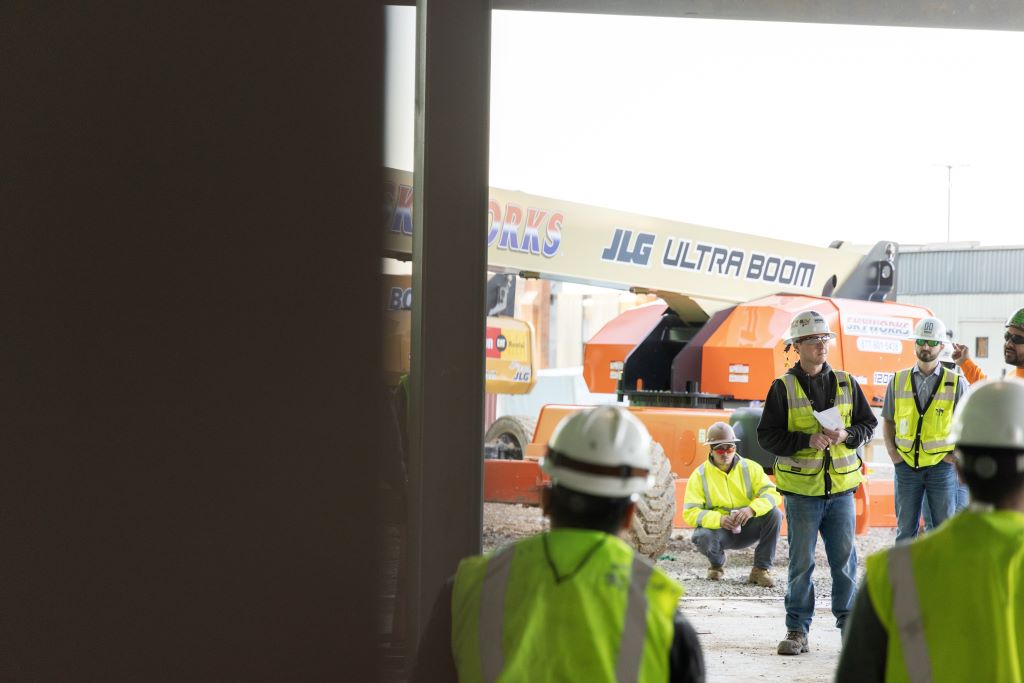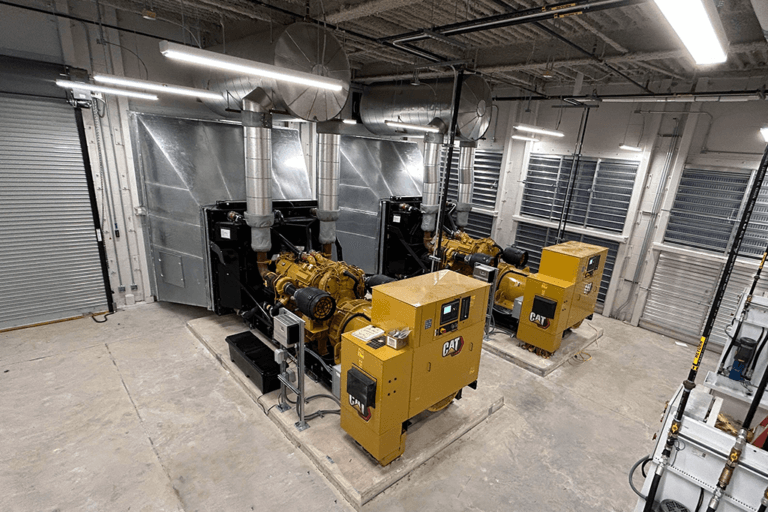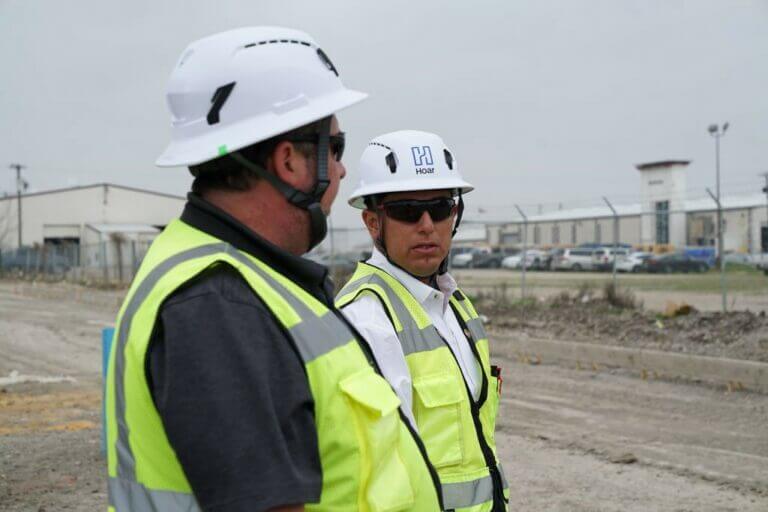
What is the single, greatest challenge facing the construction industry today? It’s the million-dollar question. The question every client looking to greenlight a project wants the answer to. And the question industry leaders want to identify so they can find solutions. It’s a question that came up during a panel I was asked to speak on at the Built National Multi-Housing Summit 2023. So, I’d like to share with you what I shared with the conference attendees.
I am going to answer the question but first I have to point out that, unfortunately, it’s hard to pinpoint a single greatest challenge — there are many challenges in recent years that our industry has been working to overcome to deliver successful projects. Volatile supply chain conditions, fluctuating construction costs, historic lead times, and economic uncertainty which is creating project funding challenges. I’ve seen our project teams overcome daunting issues connected to all these challenges by getting involved early, studying market conditions, and collaborating with the design team to find alternatives that won’t derail schedules or budgets. I think our industry has proven over the past few years that experienced, motivated teams can find solutions. That’s one reason why our industry has remained active when other industries took major hits.
There is one challenge facing our industry that has lingered since long before the pandemic. It’s a problem that we can’t overcome during a single planning session, by putting our heads together and finding a creative solution. That’s why my answer to the question I posed at the beginning of this article is the shrinking workforce. The labor shortage. It’s something we’ve been talking about for a decade or more. And as long as we’ve been talking about, the workforce keeps shrinking and there’s just not enough new talent joining our industry to fill that void. The only way to solve this long-standing challenge is a widespread, industry-wide commitment to expand recruitment efforts. I know our company, and many of our colleagues, have started focusing on diversifying our recruitment tactics, trying to get in front of new audiences to motivate and encourage the next generation of our industry’s skilled workforce. It will take work, time, and commitment.
I said the labor shortage isn’t a problem that can be solved during a single project planning session, and that’s true. However, because this challenge has plagued our industry for so long, experienced builders know how to overcome it to deliver projects. The right partner for your project will study the labor market around your proposed site during the early preconstruction phase to identify where there are problematic shortages due to a lack of workforce or market saturation. They can then create a plan to either develop and train the existing workforce, or search outside areas to find skilled trades who are willing to travel. Another solution we’ve had success with is creating detailed, phased construction plans so that we are maximizing the availability of our trade partners and finding ways to lock them into our project during timeframes, despite other commitments they’ve made. Finally, you should take into consideration the builder you choose to work with should be someone everyone wants to work with. If a general contractor has built strong relationships with the skilled trades in your area, they will be much more likely to be able to recruit and retain enough workforce to keep your project on schedule. A builder with a reputation for delays, lack of organization, and a negative work environment can make or break your project’s ability to hire trade partners.
There it is. That’s my answer to the million-dollar question. The labor shortage is a severe problem our industry can’t afford to ignore. However, I don’t want to end this article focusing on a negative because that’s not how our industry works. That’s why I love being a builder. Yes, the past three years have brought an onslaught of new challenges and have created conditions that have exacerbated existing issues, like the labor shortage. But I have also witnessed several positives that have risen up in spite of, or maybe even because of, these challenges.
Focus on Prefabrication
Since 2020 brought some supply chains to a screeching halt and drove construction costs of key materials to historic highs, we’ve seen an increased focus and commitment to prefabrication. Our company has been longtime believers in the value of prefabrication and has been leading lean construction on projects through our SmartBuild® initiative. Truthfully, before the pandemic, we sometimes had a harder time creating buy in with our trade partners or pitching the idea of widespread prefabrication to our client. The old, “if it ain’t broke don’t fix it,” adage was essentially the dissenting opinion we heard the most.
Well, the pandemic certainly broke a lot of the reliability and certainty our industry had been enjoying. Prefabrication offers a solution to overcome fluctuating construction costs, supply chain delays, as well as the ability to increase quality and safety during installation. Our teams are able to identify building components that could be built offsite, order the materials well ahead of installation date, lock in those prices, and store the materials offsite in a warehouse. Entire exterior wall panels, bathroom or patient room pods, plumbing and electrical components, can be built in climate-controlled workspaces without the need for ladders or harnesses, and then be simply delivered to the job site on the day of installation and put into place.
From what I’ve witnessed, the unprecedented market volatility opened a lot of trade partners, design partners, and clients’ eyes to the value of prefabrication. In the past three years, I’ve seen our partners much more willing to jump in and embrace this lean process. The pandemic forced us all to think outside the box, and I’m grateful our company was ahead of the game in this leaner, proactive way of building. We were able to build off our extensive prefab experience and expand into fully modular construction to find ways to deliver projects on time in spite of severely long lead times and rising construction costs. You can read more about modular construction and prefabrication here.
The Three C’s
Collaboration, coordination, and communication. I’ve seen all three improve and increase since the pandemic. During the early months, we simply had to get creative with how we collaborated and communicated. We took advantage of video calls, FaceTime inspections, and using 3-D models during meetings so our clients could walk the site without leaving their office. These efforts, I believe, improved our industry’s ability to collaborate and find creative ways to engage with each other beyond scheduled face-to-face meetings.
Similarly, to how I described the evolution of prefab, our company has long preached the positive outcomes associated with early contractor involvement. It’s been a focus of ours to break down the silos our industry tends to work in and work together with design partners from the beginning of the design phase. We used to get a lot more push back when we pitched working with design teams while the design is being drawn to improve constructability, reduce redesign and rework, meet design deadlines, and keep the project within budget and schedule. Design-build projects weren’t the traditional building delivery method, and we were asking to take that a step further and be involved from day one.
In the past few years, we’ve proven the benefits of early involvement and partnership. Our industry as a whole has seemed to evolve and buy in as well. Together with the design team, we can identify materials that won’t be available on time, or alternative finishes that won’t break the budget when the original choice skyrockets in price suddenly. We can also identify which areas of the design should be completed first so we can release bid packages to the most in-demand trades to ensure we can hire the best talent, secure enough manpower, and procure materials early.
Detailed, Data-Driven Decisions
Our industry has always done a good job of tracking procurement and material. We’re detail-orientated people. The recent change I’ve witnessed is the level of detail and data we’re tracking. Ten, maybe even five years ago, you didn’t have to track data to know how long material would take to come overseas. You knew when you needed it by and the general amount of time ahead you needed to order it by and you could trust that, unforeseen variables aside, it would be there when you expected. When estimating a project, our teams were up to date on industry costs so they knew the prices they marked down would be in line with the final cost, no matter when the actual procurement happened. Essentially, you could rely on previous experience more than actual hardened data.
Now, of course we know that’s not enough in a post-pandemic world. Our preconstruction teams are constantly monitoring up-to-the-minute cost fluctuations and supply chain conditions. That’s why we’re so committed to early involvement with the design team because we know the cost of steel you estimate for in November might be a completely different number by December. We incorporate exact figures into our estimates so our clients can take reliable, predictable budgets when they’re trying to secure funding. When we’re scheduling projects, we’ve already identified and factored in that it will take 30 to 50 weeks to secure electrical components. Our industry has drastically increased the amount of data we’re tracking and factoring into each estimate and project schedule. And we’re continuously tracking that data so if there’s a change, it is immediately identified, and our teams have the opportunity to adapt.
The final question I was asked while on that panel was, what does the future of our industry look over the next two years? We have our work cut out for us recruiting more talent to our workforce. I don’t think we can ignore that; the shrinking workforce is a challenge for construction companies, design partners, and owners because it creates additional challenges to future projects. That being said, we’ve proven we can overcome existing labor challenges with early involvement, collaboration, and open communication. Prefabrication is a great tool against reduced labor as well as you can create an assembly-line style workflow in a controlled environment on a more flexible schedule, requiring a smaller team. I’m proud of the positives that have developed out of hardship, it’s a sign this industry we all love is resilient, and we are all committed to building developments that will improve our communities.

